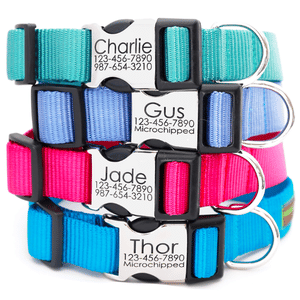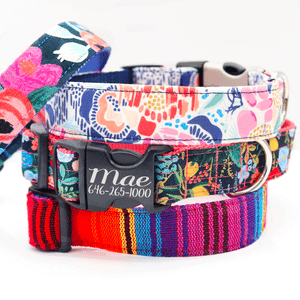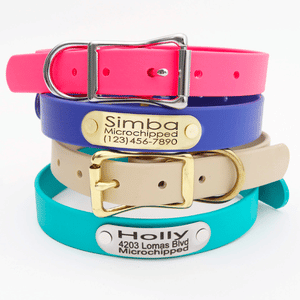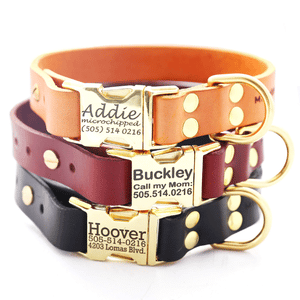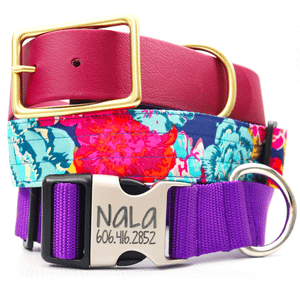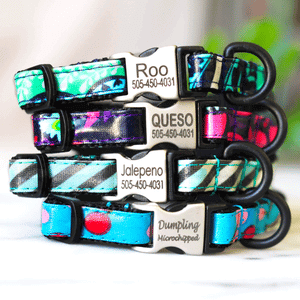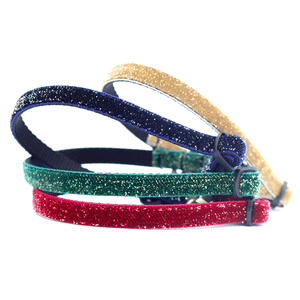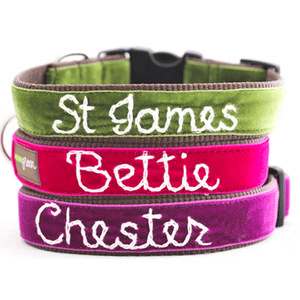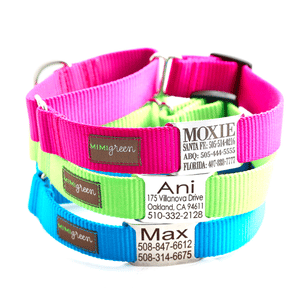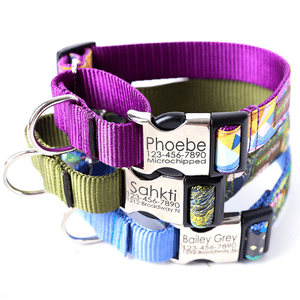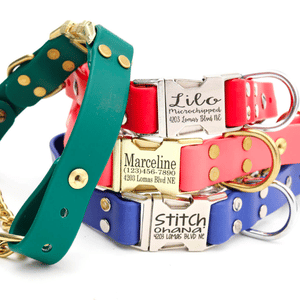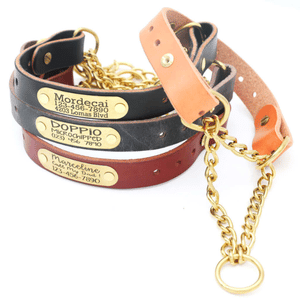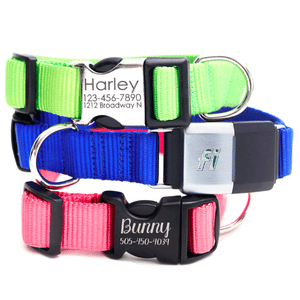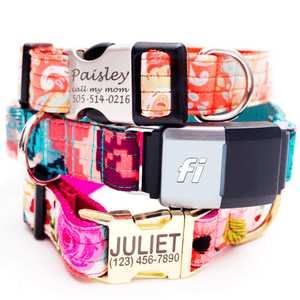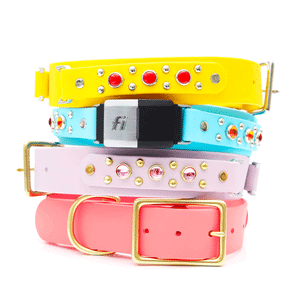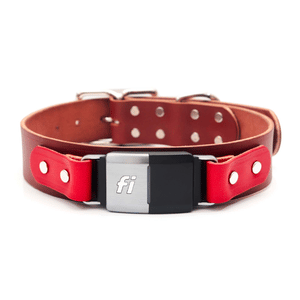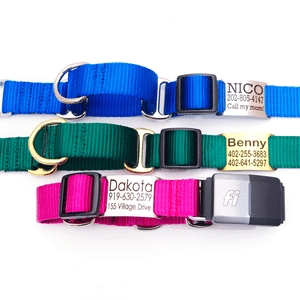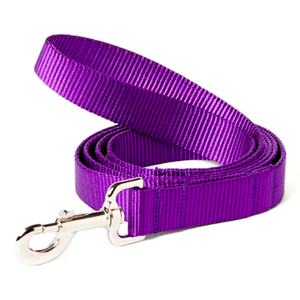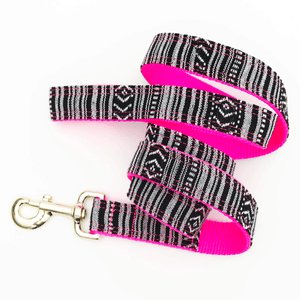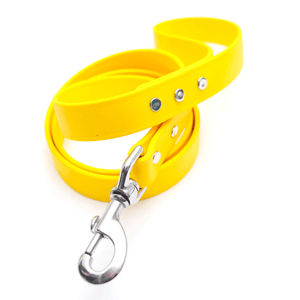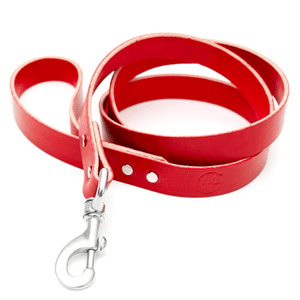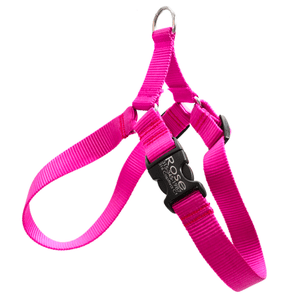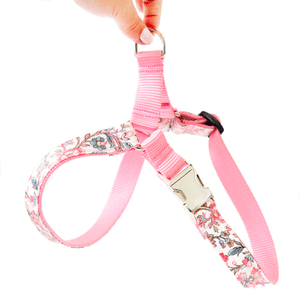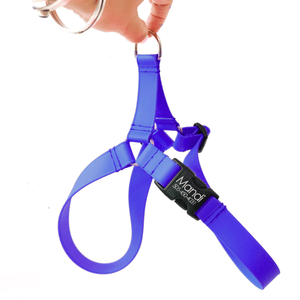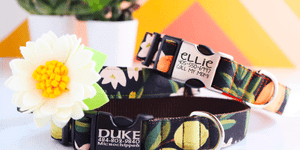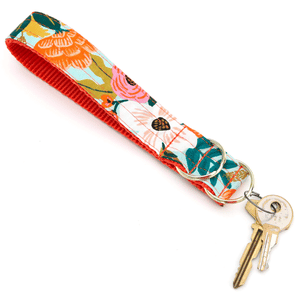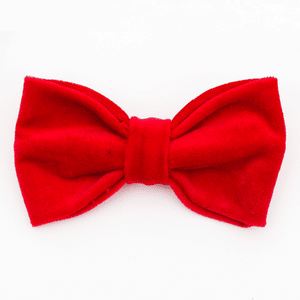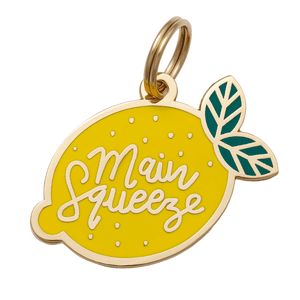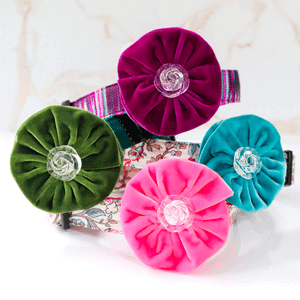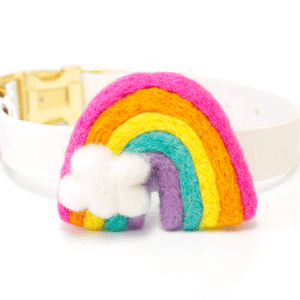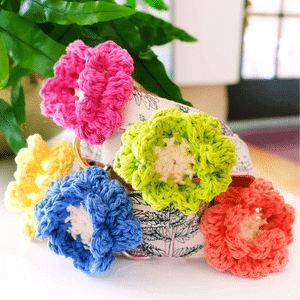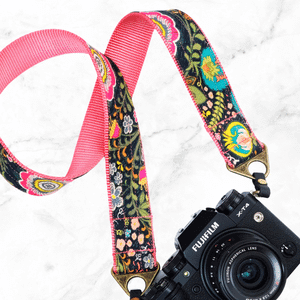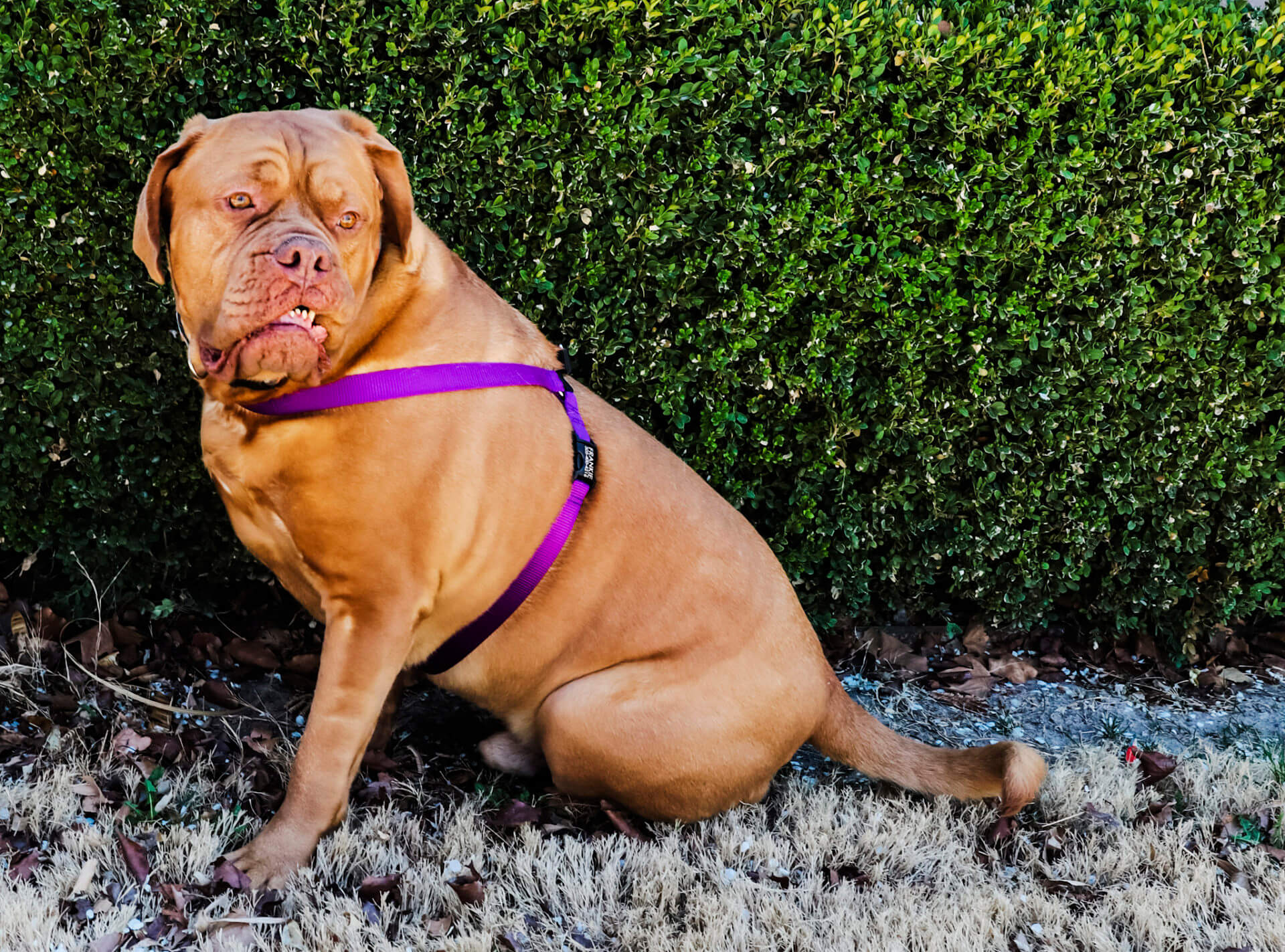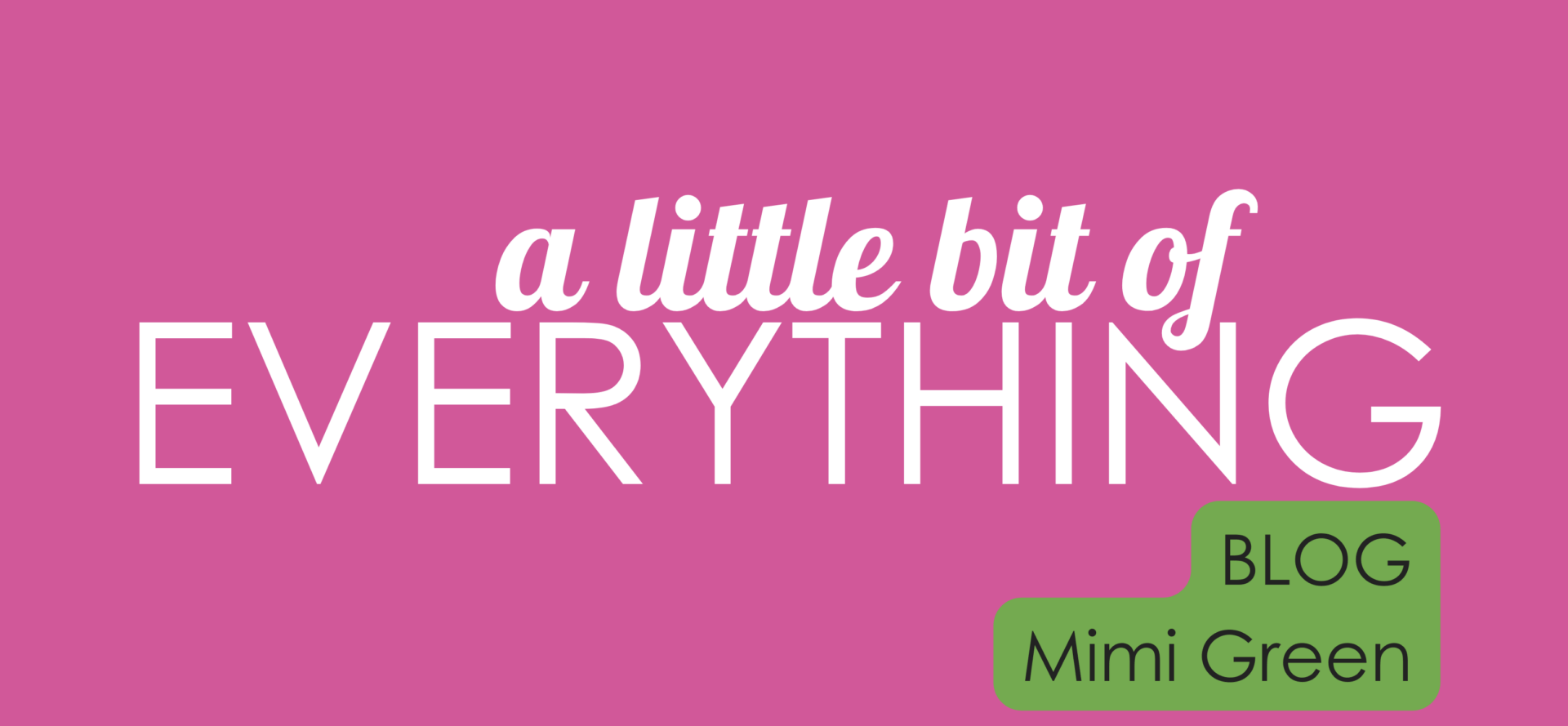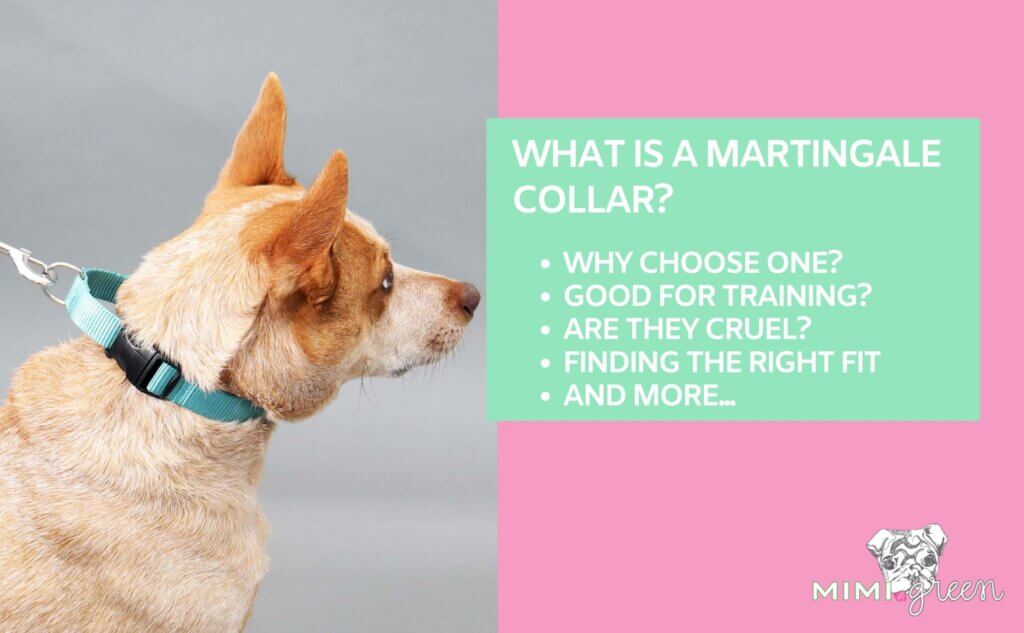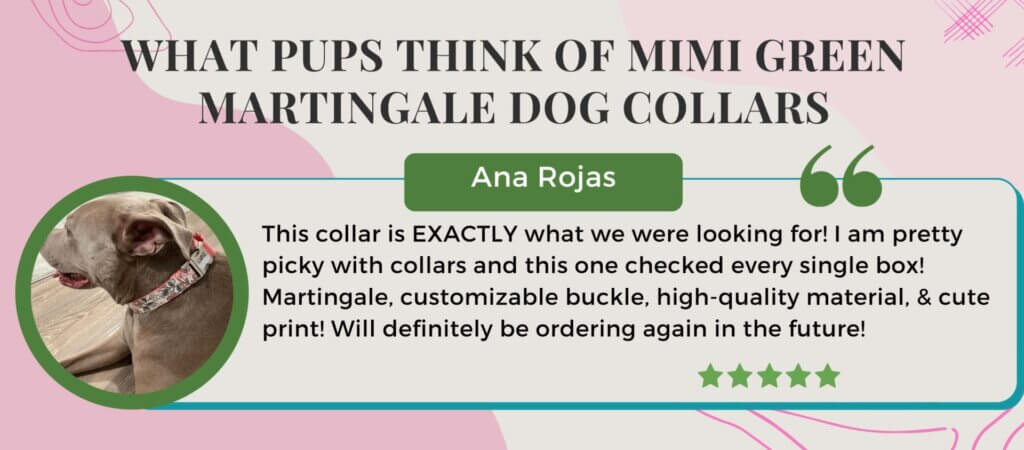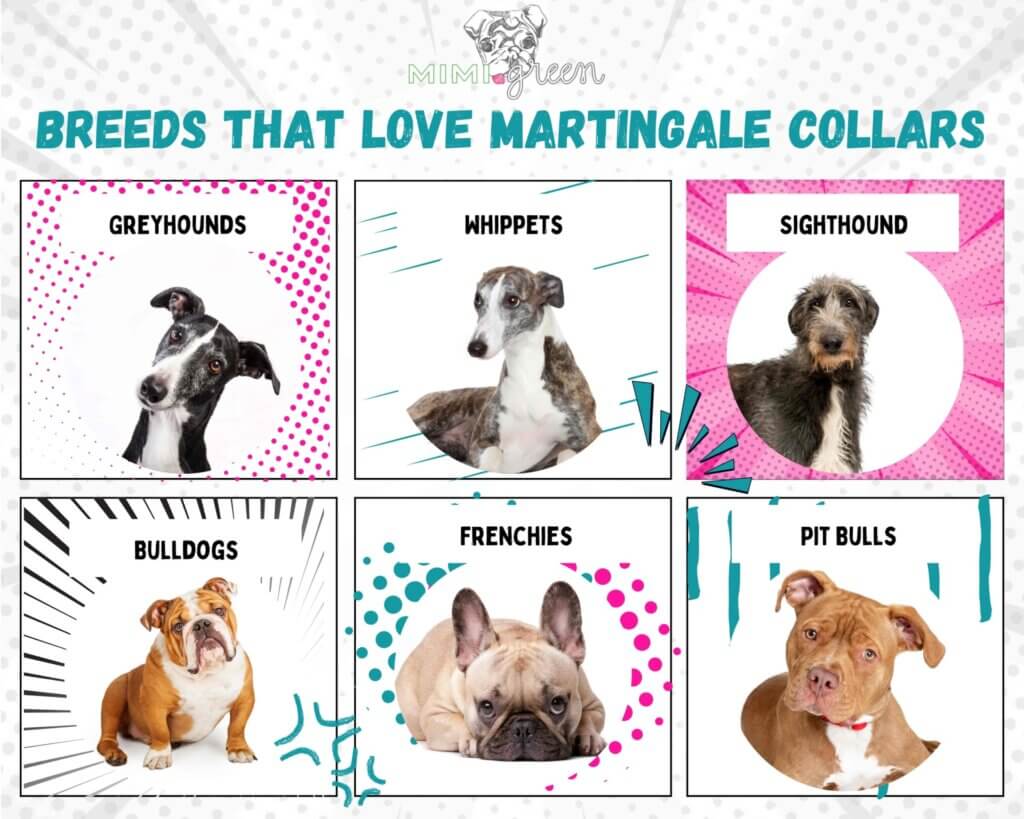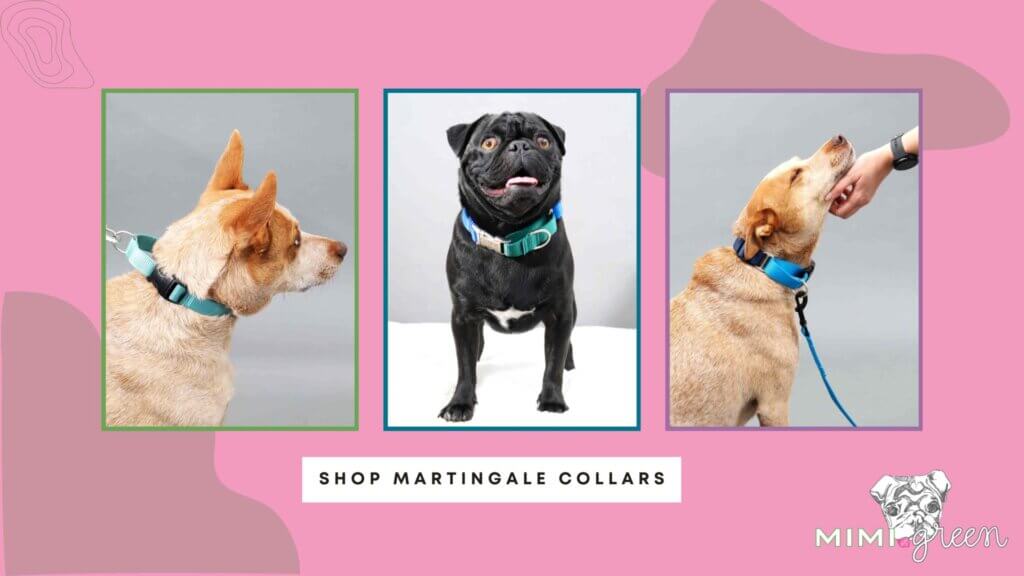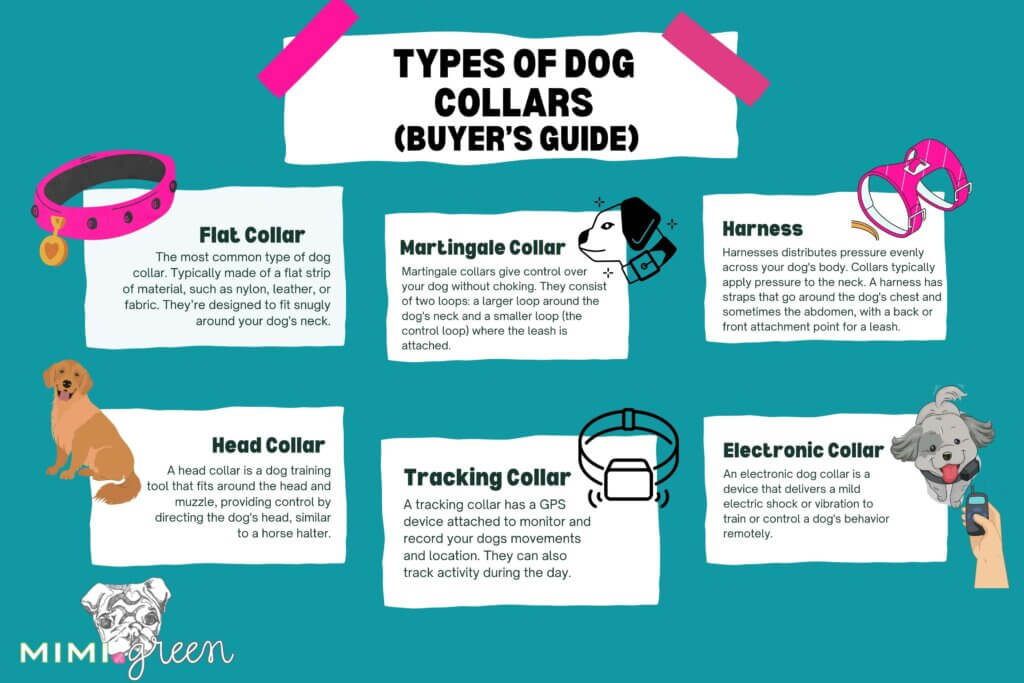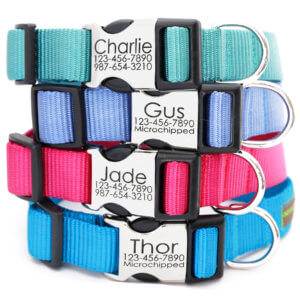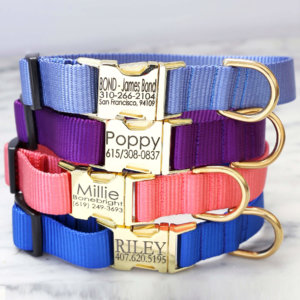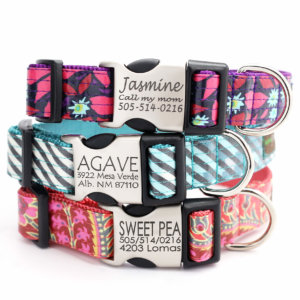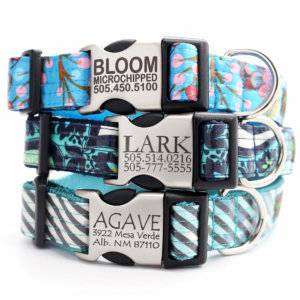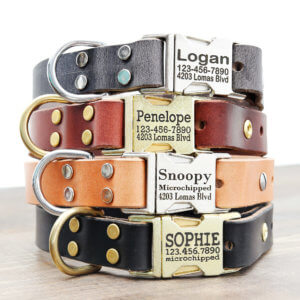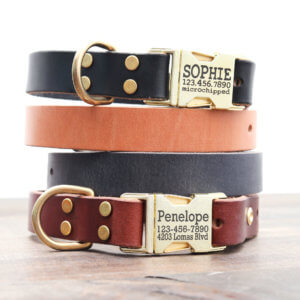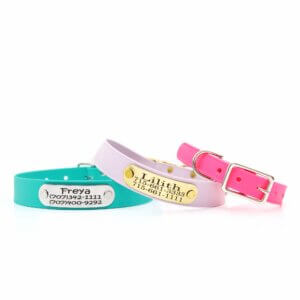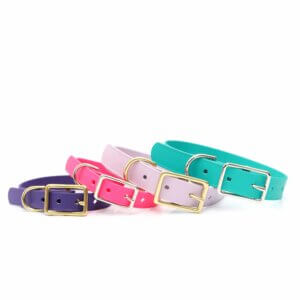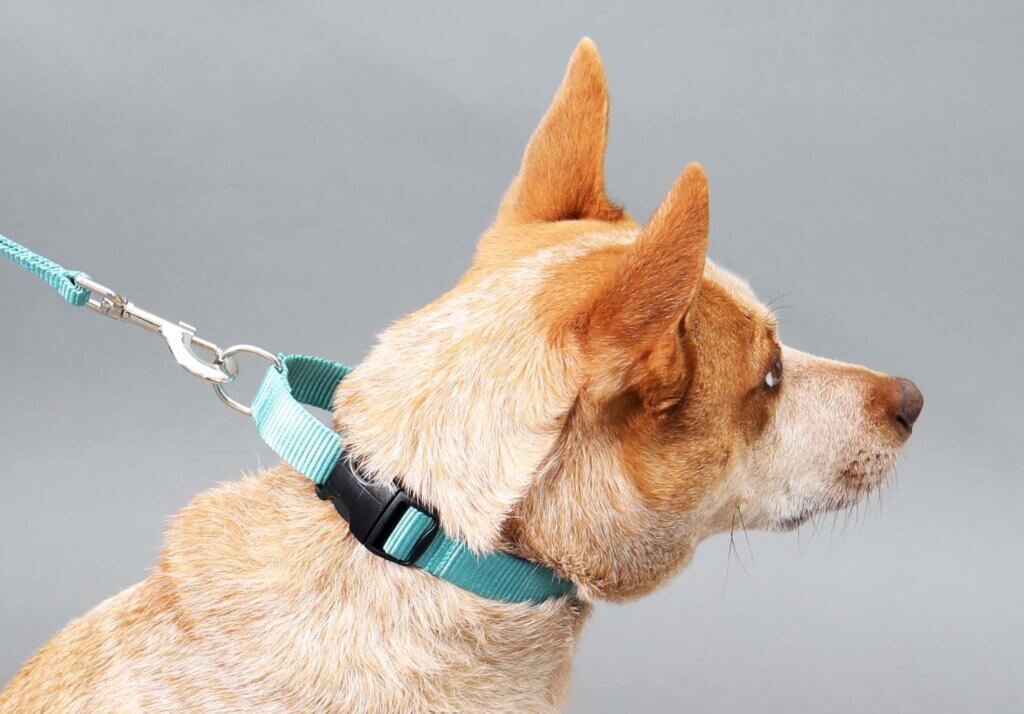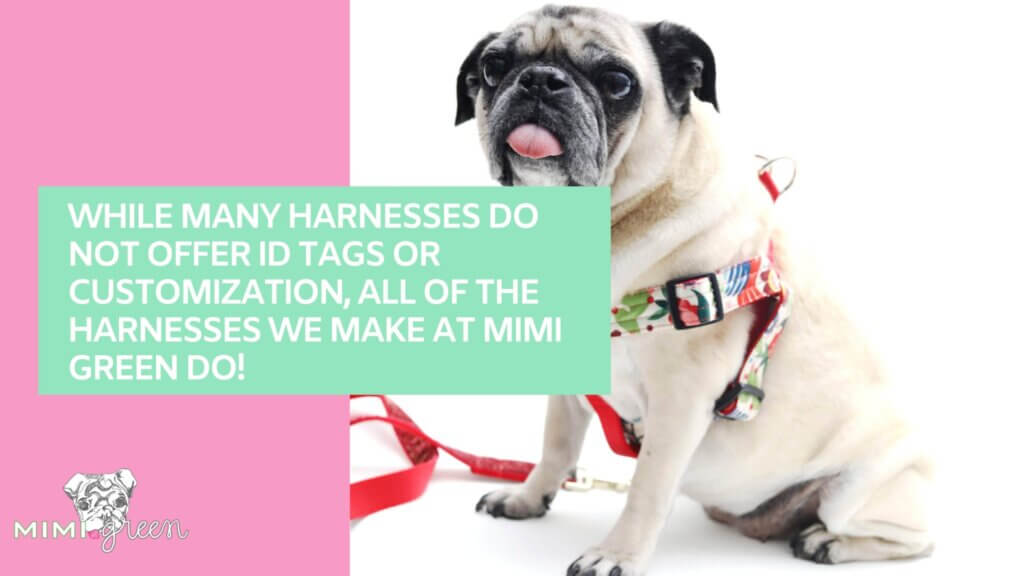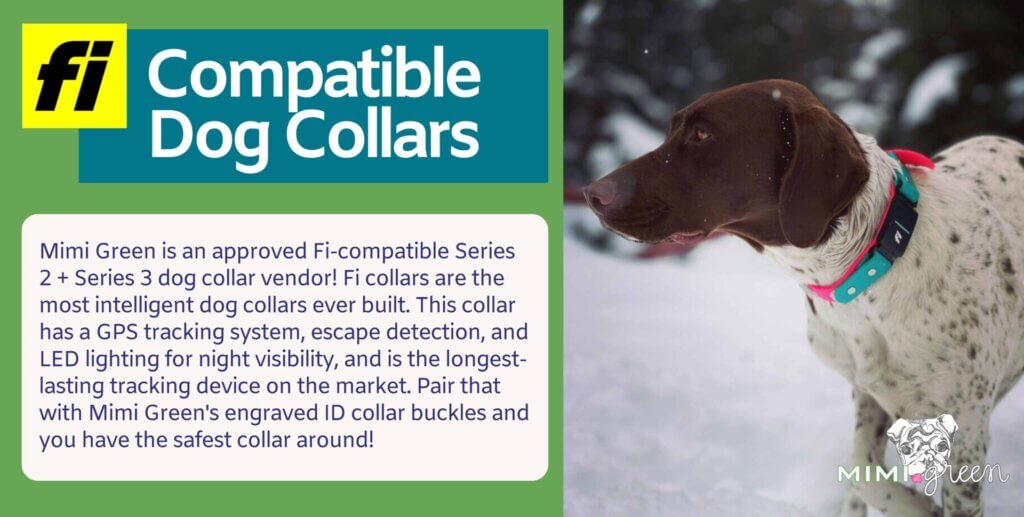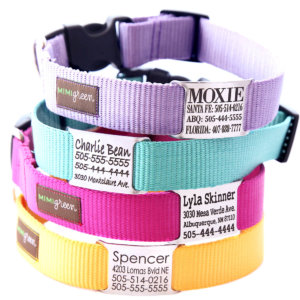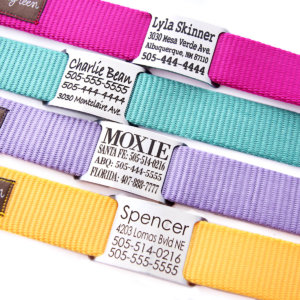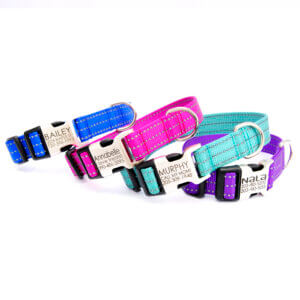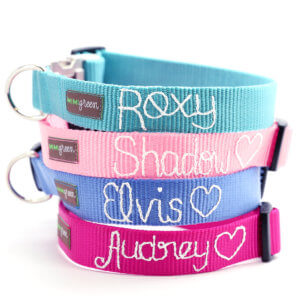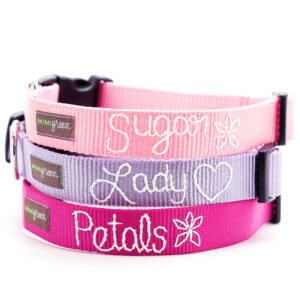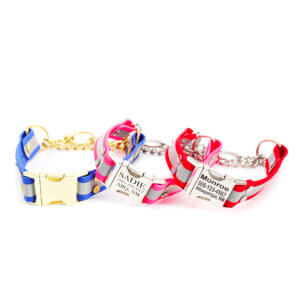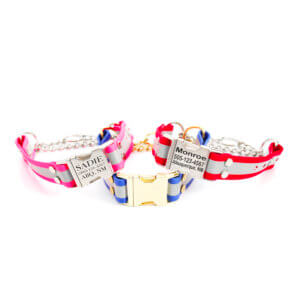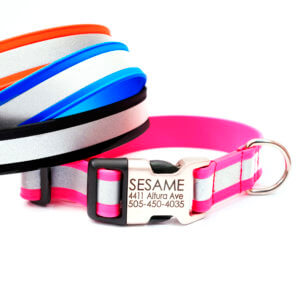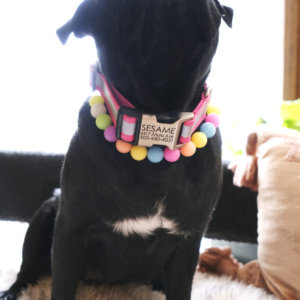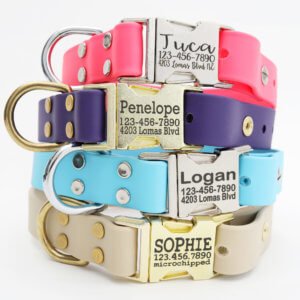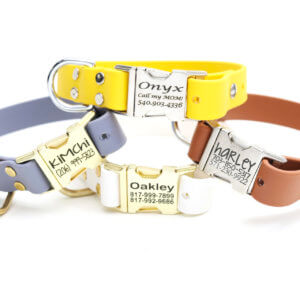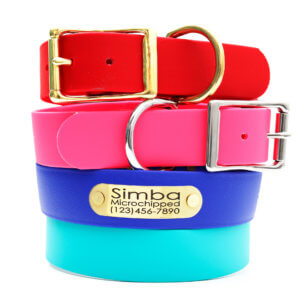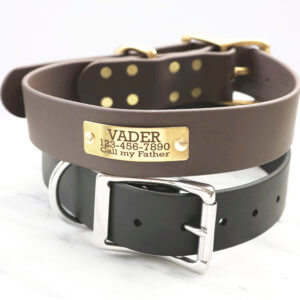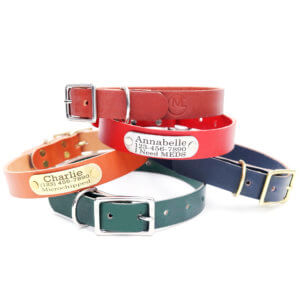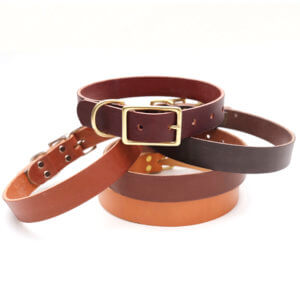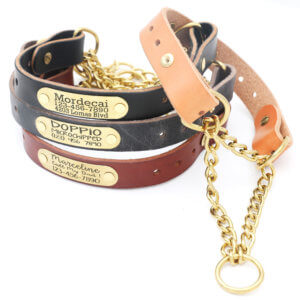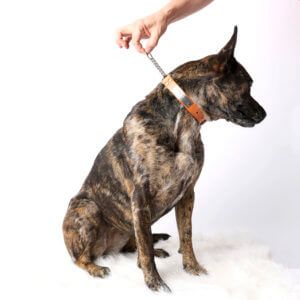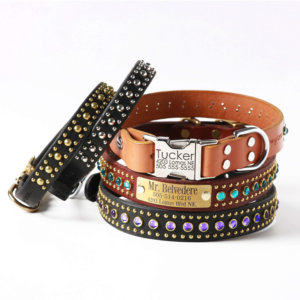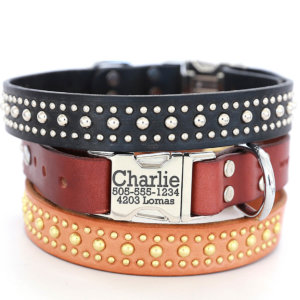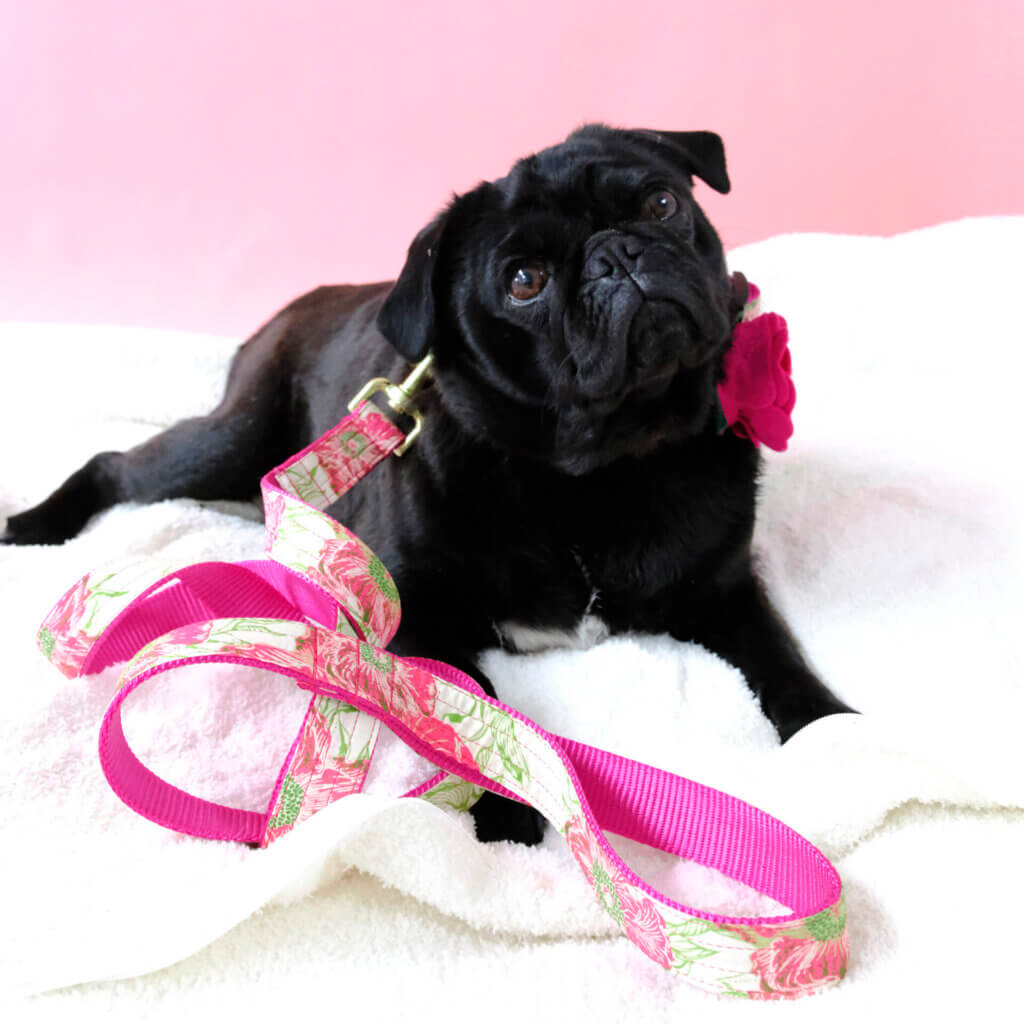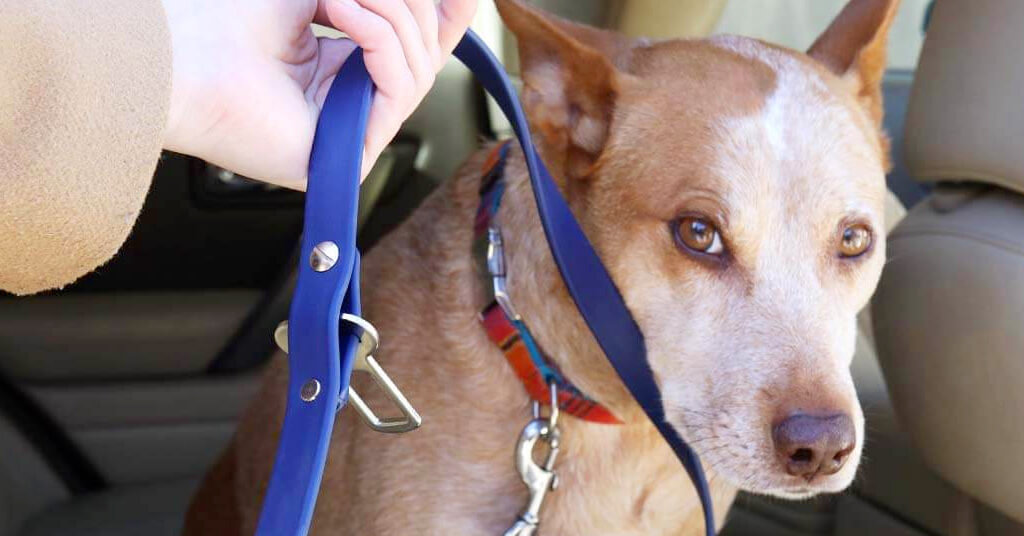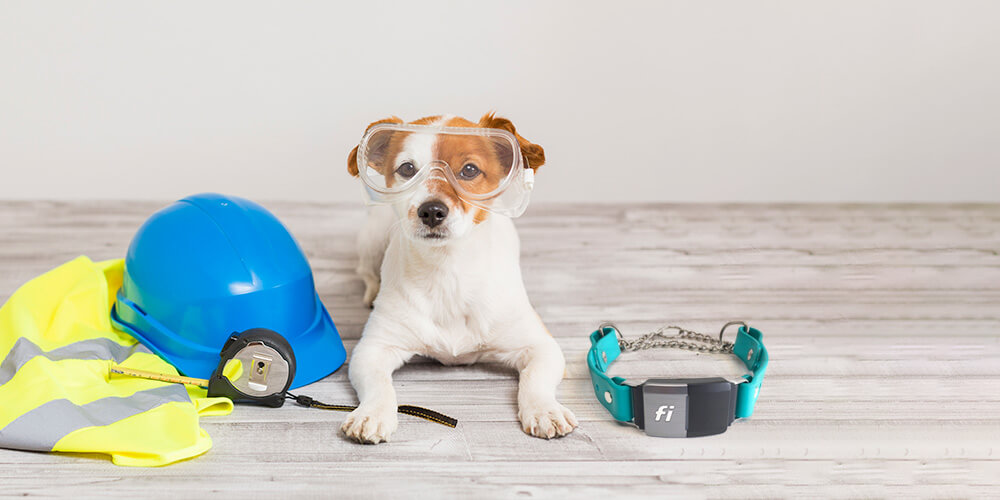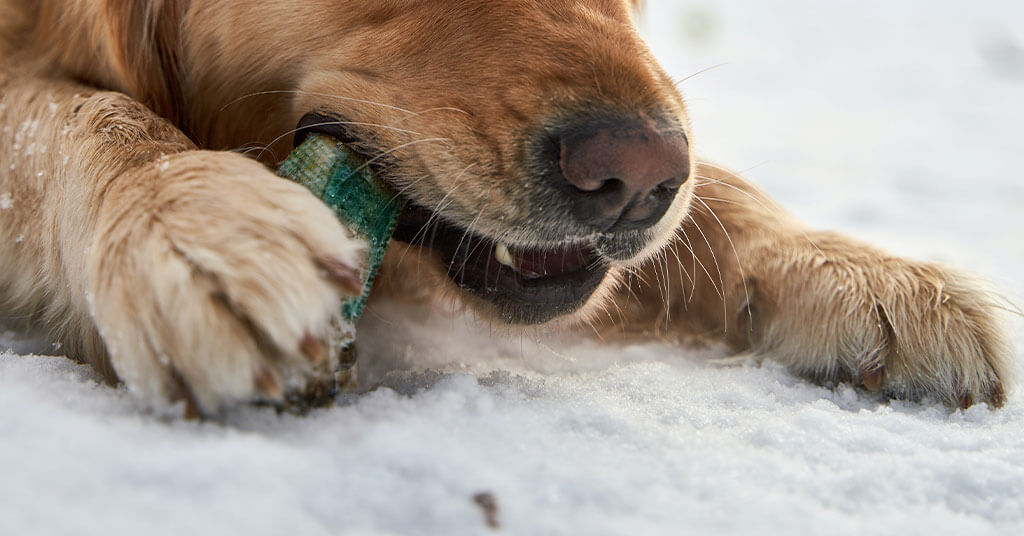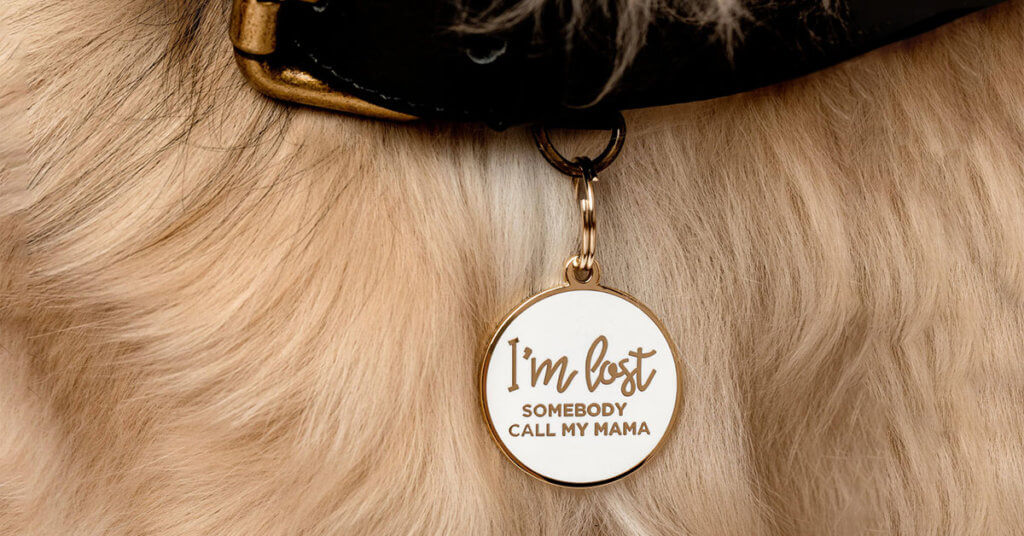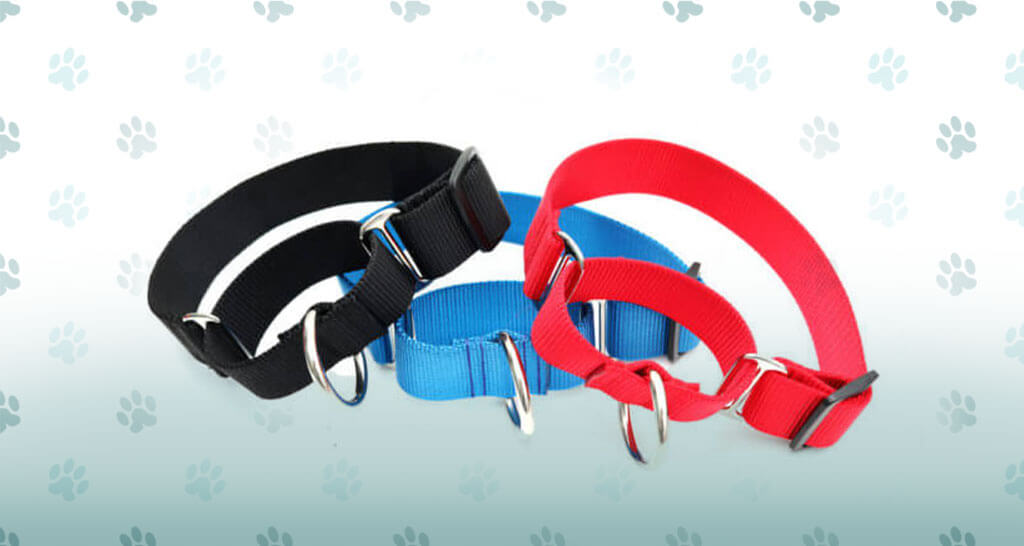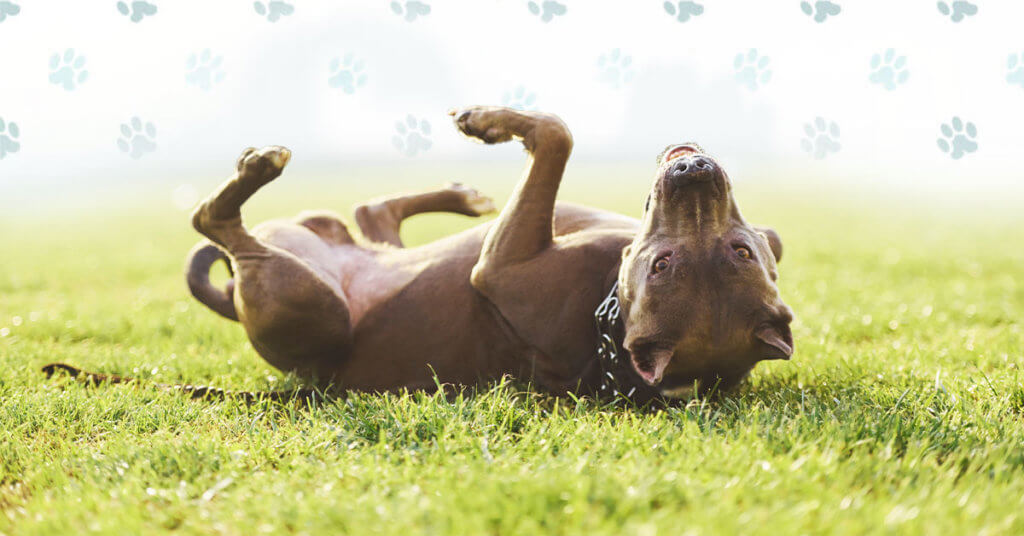Finding the correct type of dog collar for your dog takes careful thought. If you’re considering a martingale collar, use this guide to understand everything you need to know about this collar.
Key Takeaways
- A martingale collar, or a no-slip collar, tightens when the dog pulls on it. This provides more control without harming the dog’s neck and throat.
- Martingale collars benefit dogs that pull on the leash, dogs with thin heads (greyhounds & german shepherds) and skiddish dogs.
- Never leave your dog unattended with a martingale collar. Use them only for training or walks while you supervise.
What Is A Martingale Collar?
A martingale collar, or a no-slip collar, tightens when the dog pulls on it. This provides more control without harming the dog’s neck and throat. If you own a martingale collar, put it around your arm and pull it to see how the mechanism works.
Why Choose A Martingale Collar?
Martingale collars tighten quickly but comfortably. This is beneficial for dogs that easily back out of their collars.
Similar to reason #1, if your dog is fearful of other dogs or humans, it may try to retreat when it gets scared.
Mimi Green makes strong and durable martingale collars up to 1.5” wide. They’re strong enough for breeds like German Shepherds, Greyhounds, Pit Bulls, and more.
Handling a puppy is no easy task. When your pup gets the zoomies and backs out of their collar, it can quickly ruin multiple people’s day. Martingale collars can prevent that while teaching proper leash etiquette.
Dog collars typically cause chaffing or strain on your dog’s neck because they’re too tight. Martingale collars only tighten when your dog pulls, meaning they’re a relaxed fit at all other times. Martingale collars choke less because they distribute the force around the entire neck instead of just the throat.
Two Types Of Martingale Collars
|
Standard Martingale Collars |
Buckle Martingale Collars |
|
|
Using A Martingale Collar For Training
Martingale collars are great for use in conjunction with proper training techniques. Dogs that are still learning will try to pull or twist out of their collar when they see distractions or get excited. Martingale collars allow you to give slight tugs on the leash while walking to train leash manners.
While some dogs learn quickly, other dogs need more/different training aids and cues.
Are Martingale Collars Cruel?
When properly fit, martingale collars are designed not to cause discomfort to a dog. This ensures the dog can learn not to pull over time without the associated pain response.
Martingale Collars Vs. Choke Chains, Prong & e-Collars
Martingales have a loop attached to the leash that tightens when pressure is applied. They are the most gentle and user-friendly option, suitable for many breed sizes and ages, and teach leash pressure to the dog without being able to overtighten.
Choke chain collars tighten the full length of the chain. When used properly, they can teach leash pressure. If misused, they’ll tighten too much (not a limited amount like a martingale) and restrict the dog’s airway.
Prong collars are similar to a martingale in that they have a loop that tightens to a limited degree. Of course, the prongs are on the inside of the collar. Prong collars can be helpful when a trainer teaches the owner how to use them. They should not be left on for long periods or after the walk is over, as they could injure the dog if misused.
E-collars are collars with a shock or vibrate option that allow people to communicate with their dogs off-leash. They should always be used with the help of a licensed trainer who is knowledgeable about the settings, as they could harm the dog if not used properly.
There is much debate in the dog community about what the safest and most humane option is, so we always recommend reaching out to a professional if you are unsure what the best option for your dog may be. However, martingales are a safe and effective option to prevent dogs from slipping out of their collars, especially if fitted properly.
When To Not Use A Martingale Collar
- Never leave your dog unattended with a martingale collar. Use them only for training or walks while you supervise. Sadly, your dog can get caught on something, which could tighten the collar dangerously. We’d suggest additionally fitting your dog with a traditional buckle collar.
- Dogs with weak necks or breathing issues.
- Stubborn of dogs, who pull no matter what. You cannot replace proper training with a martingale collar and call it good. Martingale collars are not intended for dogs that constantly pull during walks. The collar will be perpetually tightened and uncomfortable for your dog even though it does not choke.
How To Size A Martingale Dog Collar
Since there are two types of martingale collars, we’ll give you two ways to fit them:
Fitting a Buckle Martingale Collar
- Measure the middle of your dog’s neck (where the collar will sit).
- Add at least 1 inch for smaller dogs and at least 2 inches for larger dogs.
Fitting a Slip-On Martingale Collar
- Measure the largest part of your dog’s head and the middle of your dog’s neck (where the collar will sit).
- Add at least 1 inch for smaller dogs and at least 2 inches for larger dogs.
- NOTE: If your dog’s head is larger than its neck, use its head measurement to determine the size you need. If your dog’s neck is larger than its head, use its neck measurement to determine the size you need.
For small dogs, the typical width of a martingale collar will be around 3/4”, while the most common option for medium to large dogs is 1”, and the most popular choice for medium to extra-large dogs is 1.5”.

